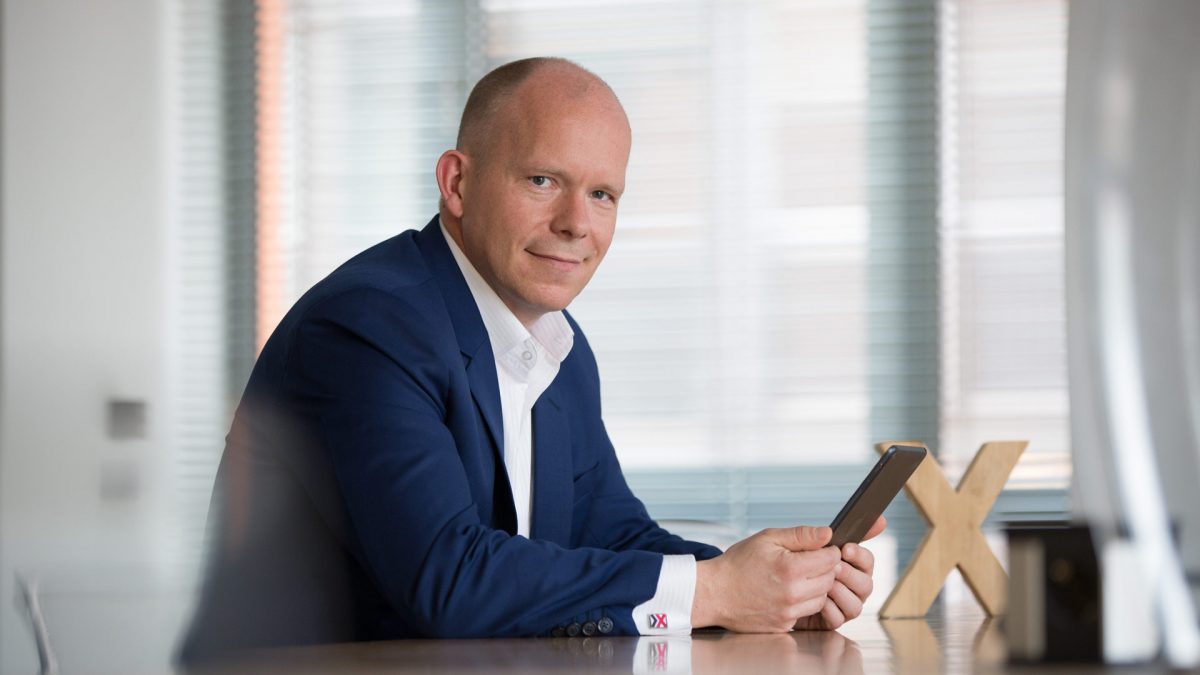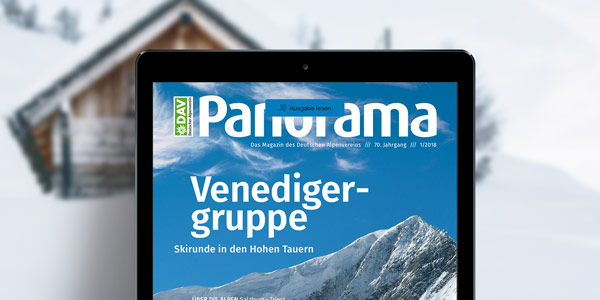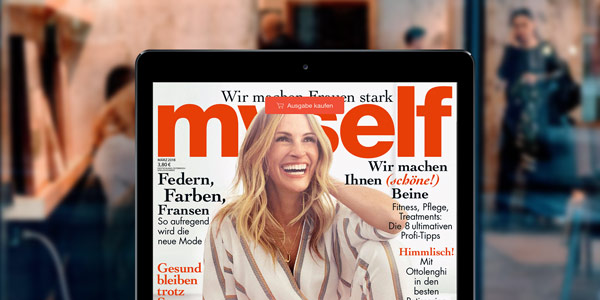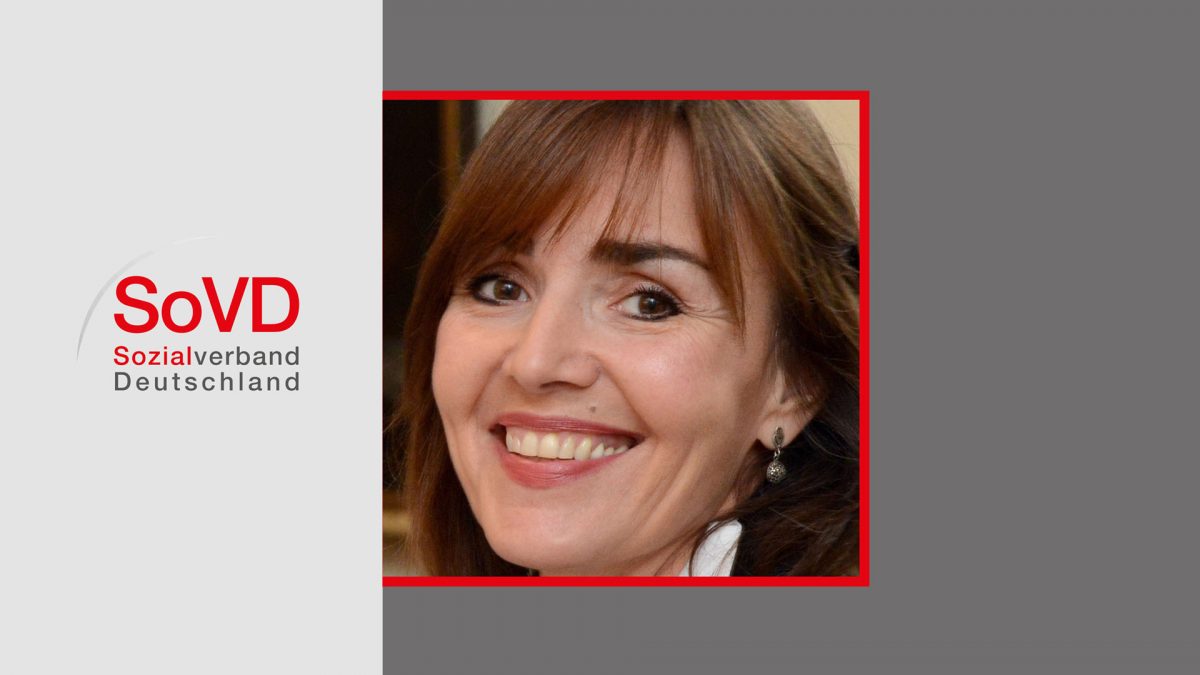Communication is key to representing and sharing the interests of members of any group. For Sozialverband Deutschland eV
(Social Association of Germany), this means not only integrating various channels and media for a broader distribution of information, but also adapting the content to the members’ and readers’ individual needs. Veronica Sina, department head of the editorial department of the SoVD, talked to us about the digitization of association work and member retention.
PressMatrix: The SoVD celebrated its 100th anniversary in 2017. First of all, congratulations! How has the work of the SoVD developed in the last 20 years?
Veronica Sina: In spite of an eventful and turbulent century, the SoVD has successfully developed from an association representing the interests of war victims to a modern organization for social advocacy. Today, our help is as much needed as ever. The tasks themselves have not changed significantly. These days we are more modern, perhaps more professional too, but, notwithstanding all the structural changes, it is still the people who take centre stage. Togetherness and being there for each other is what makes the SoVD special.
PMX: Today you can reach members and interested people through many different channels. To what extent does this influence your work and the public awareness of the SoVD?
VS: Communication within associations has become ever more important in satisfying the interests of members, in winning over their commitment, and also in discovering new target groups. Especially in view of the increasingly complex media landscape, the complementation and integration of the various channels has become indispensable. Whether it be an association magazine, an online magazine, web TV, social media, newsletters or brochures, the fundamental aim is to reach all target groups through the relevant channel. Digital media support us in this essential task, for example with the centralization of advice and information. Digitization also plays an important role in press and public relations and lobbying and is becoming increasingly important for the association as a whole.
PMX: Do you feel that your digital media work has led to an increased awareness of issues such as inclusion, equal opportunities, or old-age poverty?
VS: Information means participation. A barrier-free website with a clear layout is indispensable. But it isn’t always enough. For some years we’ve also been offering our online magazine in audio mode. The talking book format is presented using DAISY, which enables visually impaired and blind people to navigate comfortably within the texts. The relevant audio version is available for download on the SoVD homepage a few days after publication of the online magazine. The audio version, available since 2014, is intended to better support the legitimate needs of people with disabilities. Accordingly, we have a contract with atz-Hörmedien for the visually impaired and blind in Holzminden, who expertly narrate the audio version of the magazine.
Other examples of our association work further show how digitization can be used to expand the service offers for our members. At the end of the year, SoVD published a new online offer which quickly and simply helps to assess ones personal risk of being affected by old-age poverty. After a short question-and-answer dialogue, users receive individual information on their current situation and an initial evaluation of their susceptibility to future poverty. In addition, the SoVD presents approaches to effectively preventing and combating old-age poverty. The association aims to help counter a widespread fear of the future, raise awareness on the topic, and contribute to the fight against old-age poverty. The free online self-test on the SoVD platform check.sovd is an ideal medium for this.
No matter if it’s an association magazine, online magazine, web TV, social media, newsletters or brochures – it is crucial to reach all target groups with the appropriate channel.
PMX: You’ve been offering the “SoVD Magazine” in a separate app since 2016. What made you seek a mobile solution?
VS: Our print newspaper, with a circulation of more than 400,000 copies per month, continues to play a central role in retaining and attracting members. Our members receive it in their homes without further ado. More and more members are also using mobile devices such as smartphones and tablets. Earlier reservations have been put aside with many realizing that tablets are user friendly and can be tailored to the needs of the mature generation. In this light, it was important to us to make the online magazine available as an app. With the help of a broad spectrum of modern communication in print and online, the SoVD is reaching as wide an audience as possible, which all adds up to an increased awareness of and interest in the issues at hand.
PMX: Why did you choose PressMatrix for the implementation?
VS: The PressMatrix application offers us numerous opportunities to realize options tailored to our requirements. First, the application as an app guarantees us an optimal presentation on all operating systems (Android, iOS or Windows), which also applies to both PC and Mac. Using the relevant widgets, the SoVD magazine can easily be enriched with videos, photo galleries, panoramic images, audio files and other social media content. We can thereby provide our members with a photo gallery of major events, press conferences and promotions that cannot be included in the print edition for reasons of space. Active links can be provided to other websites, Facebook, YouTube, and other publications such as SoVD statements or brochures. This contributes to the vibrancy of the medium and lets the reader choose whether to explore a topic in more depth and continue clicking. These were just some of the arguments that convinced us to try out the app. Equally important, magazine information can be updated at any time, and users can see the updates as “push” notifications. This is helpful, for instance, if a date changes at short notice or if important information needs to be included “after proof”. Of course we will carry out an appropriate evaluation in relation to the specific requirements of our magazine issues. This in turn will influence our further course of action.
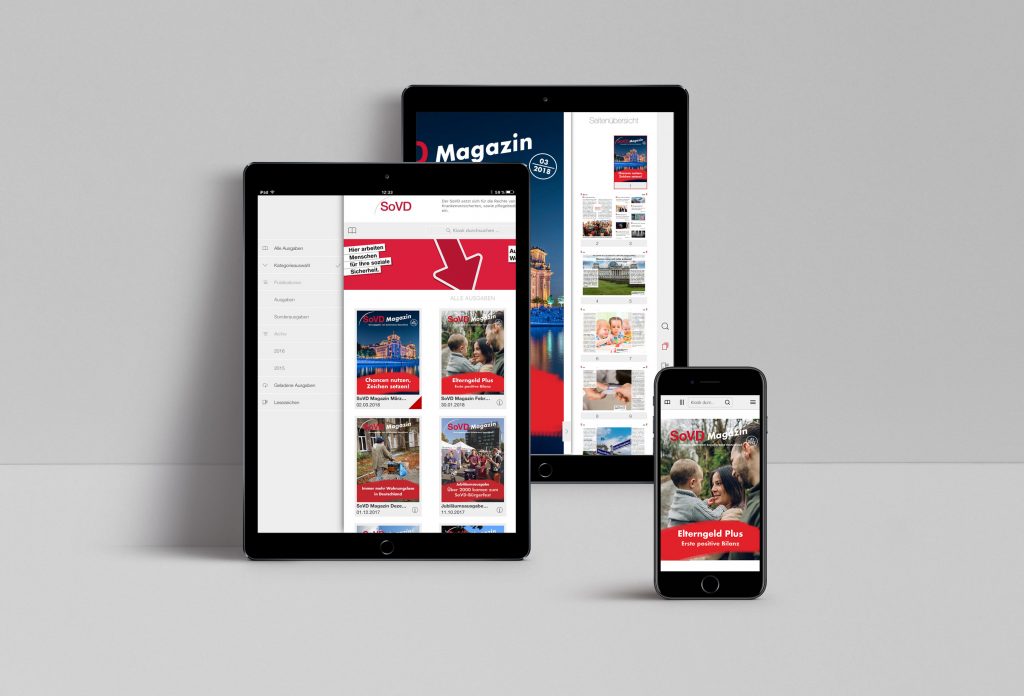 The SovD app for iOS, Android, Amazon and for the web. How the app works explains the association directly in this video.PMX: What experience have you had so far with the apps? For instance, have you managed to gain new readers or subscribers?
The SovD app for iOS, Android, Amazon and for the web. How the app works explains the association directly in this video.PMX: What experience have you had so far with the apps? For instance, have you managed to gain new readers or subscribers?
VS: It is still too early to make an accurate or comprehensive assessment. However, we can say that in just a few months, we had over 130,000 hits on the browser-client-based version. At the same time, the number of app users is growing from month to month. Currently we are close to the 6000 mark. This is a remarkable development in such a short period of time for an association with an average member-age of 60+. In addition, month after month we’ve been receiving numerous letters and emails with the basic message: “Finally. Keep it up!”
PMX: What do your members and customers say about your magazine app?
VS: In the anniversary year in particular, there were numerous opportunities to make optimal use of the additional app functions so that our members could benefit and participate more actively in the association’s events. On the occasion of our 100th anniversary celebrations on 23rd May, the chancellor held the ceremonial speech in the presence of numerous honoured guests and deserving volunteers. Hundreds of photos were taken. We could not possibly have included these in our print edition. So we created several galleries in the app. And we repeated the procedure for the fourth SoVD inclusion run in Tempelhofer Feld in August and also for the two-day anniversary celebrations in and around the national branch office at Jannowitzbrücke in Berlin in which more than 2000 people participated. Thanks to the additional functions of the app, with film and photos we were able to capture images, sounds and speeches that adequately reflect the atmosphere of the main events.
However, we can say that in just a few months, we had over 130,000 hits on the browser-client-based version.
PMX: The “SoVD Magazine” is a digital complement to your member magazine “Soziales im Blick”. Are you planning to publish this or any other magazines or brochures on topical issues in the app?
VS: As already mentioned, in relation to the association’s communication, complementing and integrating the various channels in a meaningful manner is essential. In this, it is also important for us to work together in a close and coordinated manner across departments. For example, we already include newly published brochures in the app. Moving images are also a format that can be optimally integrated, since the video format in particular spreads quickly and is suitable for explaining complex relationships simply. Conversely, content from the SoVD newspaper and the SoVD magazine is integrated in Facebook, youtube and Twitter, the prominent social media platforms used in our public relations.
PMX: On a personal level: Volunteering is an important part of the SoVD. Do you do or have you done voluntary work?
VS: I support disadvantaged children in several aid projects.
PMX: Thank you for the interview!
Veronica Sina has been heading the Editorial Department of the SoVD Federal Association in Berlin since 2009. Previously, she worked as a court reporter and editor in the supraregional for the Aachener Zeitung. As a freelancer she also worked u.a. at the NRZ, Deutschlandfunk and various news portals.
Also interesting: how sales documents and customer information are digitized effectively and inexpensively, the interview with Ralph Castiglioni, managing director of Basler Financial Service GmbH.
In our blog we regularly present best cases and talk to media representatives and corporate worlds about approaches, problems and the implementation of their own digital publishing projects.
